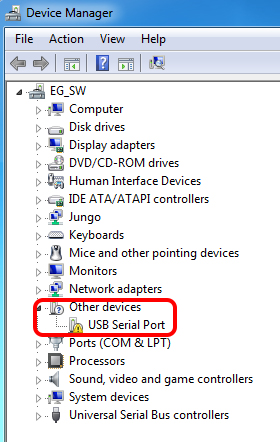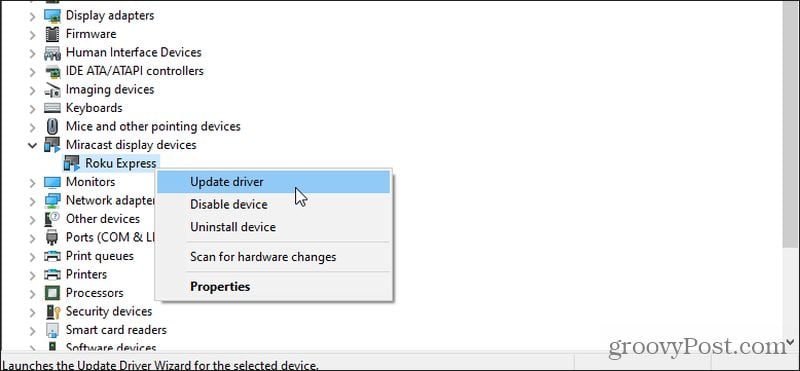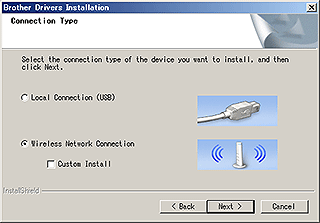- Drivers Select Wireless Port Devices Bluetooth
- Drivers Select Wireless Port Devices Gigabit
- Drivers Select Wireless Port Devices Adapter
- Drivers Select Wireless Port Devices Replacement
Almost all Moates.net products have a USB interface to connect to a computer. (ALDU1, HULOG, Hondalog, BURN1/2, Ostrich 1/2, Roadrunner, Quarterhorse, Jaybird) Fortunately, all Moates.net products with a USB interface use the same USB support chip so they can all use the same drivers. This makes it easy for you – one driver install will take care of ALL Moates products! Check out USB Driver Installation for more on how to reinstall drivers.
- After you upgrade the computer from Windows 7 to Windows 8.1 or Windows 8, devices that connect to the computer by using a FireWire port do not work. Cause This issue occurs because the legacy 1394 bus drivers (1394bus.sys and Ochi1394.sys) are removed in Windows 8.1 or Windows 8.
- Windows device driver information for Watchport Wireless Serial Port. Watchport Wireless Serial Port is a state of the art device that allows wireless communication between two different external serial ports. This device can also be called an adapter as it performs the same specific task as any adapter does.
- Windows device driver information for COM Port G. The COM Port G falls under the category Network and Modem. On computer and telecommunication devices, a port is generally a specific place to be used for physically connecting to some other device like a socket and plug.
The chip in our devices is made by a company called FTDI. This chip is VERY common and is used in everything from USB-serial and USB-parallel adapters sold in computer stores to other automotive electronics products. This is important because of the possibility of a driver conflict between drivers for your Moates.net devices and other devices that also use the FTDI chips. AEM FIC, Hondata S300 and K-Pro and the USB Instruments Stingray and Swordfish (among others) have a tendency to obliterate our drivers and cause driver conflicts. Be warned: the troubleshooting instructions later on this page may cause other devices that use the FTDI chips to stop working. Tip: If you start having driver conflicts, installing the latest drivers from FTDI will often be enough to resolve conflicts and make everything work again.
First step to making sure you don’t have a connection issue is to unplug all USB devices that are not absolutely necessary from your computer.
First, Right click on My Computer. (You might find this on the desktop, you might find this in your start menu. Desktop pictured)
Next, go to the Hardware tab and select “Device Manager.” (note: Windows XP is pictured, but the exact placement of device manager may vary slightly in Win98 and Vista)
The sample code we use to show port I/O from within a device driver acts on general-purpose digital I/O ports; such ports are found in most computer systems. A digital I/O port, in its most common incarnation, is a byte-wide I/O location, either memory-mapped or port-mapped.
Next, go to the “Ports” section of device manager and click the + sign next to it to open it, if it is not already open. You should see something like this:
Now plug in ONE of your Moates.net devices. We are going to plug them in one at a time to figure out which ports Windows is assigning to them. Assuming everything is working, you should see something like this in device manager:
The “USB Serial Port” device pictured is using COM10. Some software has issues with COM ports greater than 8, so the first thing we are going to do is change the port it uses to a port less than 8. Looking at device manager, you can see that Bluetooth Communications Port has used COM5 and a Communications Port has used COM1. We should not use either of these ports. We are going to change to COM3, which is unused. First step: right click on the “USB Serial Port” device and click “Properties.”
Next, click on the “Port Settings” tab at the top of the Window.
Next click the “Advanced” button.
On this screen, there are several things to change. First change the COM Port Number to COM3, the port we decided was open. If all of your ports say “in use” you can still select them, but it is recommended you find an unused port under 8. Second, set the Latency Timer to 1 msec. When you are done, click OK on this screen and the driver screen that follows until you are back at Device Manager.
These are the optimal settings for our devices (COM1 – COM8 and Latency = 1ms). If you had trouble, try again with these settings. Remember which port your device was using in device manager when it comes time to configure your tuning software.
It is possible to disable devices in Windows. Sometimes this can happen accidentally. If a device is disabled, it has a red X across its icon, like the Bluetooth Communications Port in this picture.
To enable it, right click on the device and select “Enable.” Afterwards, the device should not have a red X across its icon.

Devices can also have issues loading or have device driver problems. When this happens, a yellow exclamation mark appears. Almost 100% of the time, this is a sign that you need to reinstall device drivers. If a simple reinstall does not fix the issue, there is a more heavyhanded method to reinstall drivers using FTCLEAN.
A Windows printer definition includes a port and device driver. For standard output devices, you can use port and device driver pairs supplied by Microsoft or a printer vendor. For output and input devices unique to the Barr software, you can use the port and device driver pairs supplied with BARR/SPOOL.
Different port and device driver pairs are used to direct data into and out of the spool. Which port and device driver combination you use in a particular instance depends on both the data source and the intended data destination. Drivers format data as it exits a program. Ports control the flow of data to its destination.
The port and device driver combination you use for a Windows printer for BARR/SPOOL depends on whether the Windows printer is a source or destination for spool files.
When you input files to the spool or output files from the spool, you must use port and device driver pairs that correspond to the file format. The original file will be in one of two types of file formats: Barr formats or printer-specific formats.
Files in a Barr format require a Barr port and a Barr device driver. Examples of files in a Barr format include files sent with Print Utility or files input from an NJE host with the BARR/NJE module.
Examples of files in a printer-specific format include files from a Windows program such as Microsoft Word. Files in a printer-specific or destination-ready Data formatted for its ultimate destination. For example, if the data is intended for a printer, it becomes destination-ready when it gets converted to the format the intended printer requires. format require a port and device driver from the printer manufacturer.
When you use a printer-specific driver on inbound spool data, the file is converted only once (instead of twice), which speeds overall processing.
The following links provide descriptions of the available ports and examples of their use.
What do you want to do?
See also:
Port and device driver descriptions
The following tables list the available ports and device drivers, along with a description. The port and device driver combination you choose depends on both the data source and the intended data destination.
Ports
Option | Description |
Barr File port | Use only for spool output to computer disk destinations. |
Barr FTP port | Use only for spool output to an FTP host. |
Barr IP port | Use only for spool output to a TCP/IP socket or a Xerox DocuPrint EPS Acronym for Enterprise Printing System.. |
Barr LPR port | Use only for spool output, to route ASCII files to a TCP/IP LPD host. |
Barr NJE port | Use only for spool input to an NJE host. |
Barr PRINT390 port | Use only for spool output to S/390 channel output devices, such as S/390 channel printers. |
Barr RJE port | Use only for spool output to an RJE host. |
Barr Spool port | Use only for spool input from Windows programs. |
Local port (LPT1, COM1) | Use for output to local or network printers. |

Device drivers
Drivers Select Wireless Port Devices Bluetooth
Option | Description |
Barr ASCII printer driver | Use for spool output to legacy ASCII line printers. |
Barr EBCDIC printer driver | Use for spool input from Windows programs. |
Barr Jobs to Mainframe printer driver | Use for spool input intended for hosts and for spool output to hosts. |
Barr PRINT390 printer driver | Use for spool output to S/390 channel printers. |
Printer-specific driver | Use for spool input or output. |
Port and device driver examples
These examples list which port and device drivers you would use to define Windows printers for spool input and output for a specified file format, source, and destination.
Text file to PC-attached channel printer
Receive a text file from a Windows program and print to a channel printer.
Barr EBCDIC printer driver & Barr Spool port Spool
Barr PRINT390 printer driver & Barr PRINT390 port Channel device
Text file to local parallel printer

Receive a text file from a Windows program and print to a network printer.
Barr EBCDIC printer driver & Barr Spool port Spool
HP printer driver & network HP port LPT device
Text file to host (SYSIN)
Receive a JCL text file from a Windows program and send it to the host as a SYSIN job.
When SYSIN jobs are added to the Spool Window, they appear shaded in a light blue background.
For BARR/NJE
Barr Jobs to Mainframe printer driver & Barr Spool port Spool
Barr Jobs to Mainframe printer driver & Barr NJE port Host
For BARR/RJE
Barr Jobs to Mainframe printer driver & Barr Spool port Spool
Barr Jobs to Mainframe printer driver & Barr RJE port Host
Text file to host (SYSOUT)
Receive a text file from a Windows program and use BARR/NJE to send it to the host as a SYSOUT job.
BARR/RJE does not support sending SYSOUT data to the host.
Barr EBCDIC printer driver & Barr Spool port Spool
Barr Jobs to Mainframe printer driver & Barr NJE port Host
Native printer format (pass through) to network printer
Receive a raw file from a Windows program and send it to a network printer.
HPII driver & Barr Spool port Spool
Network HP LaserJet printer LPT device
Text file from Print Utility to local parallel printer
Use Print Utility to send a text file and print it to a parallel printer.
Network HP LaserJet printer LPT device
Drivers Select Wireless Port Devices Gigabit
EBCDIC file from host to channel printer
Receive an EBCDIC file from an NJE host and print it to a channel printer.
Barr PRINT390 printer driver & Barr PRINT390 port Channel device
EBCDIC file from host to a client application
Receive an EBCDIC file with Print Channel from host and send it to a client application.
Drivers Select Wireless Port Devices Adapter
Barr ASCII driver & Barr IP port TCP/IP socket
Drivers Select Wireless Port Devices Replacement
